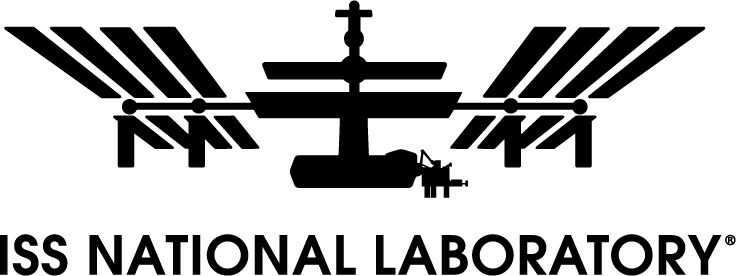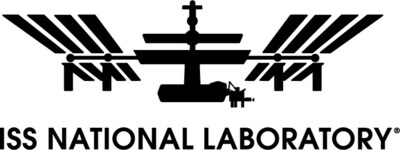
Cision PR Newswire
New Earth Observation Technology to Expand Insights on Climate Change, Natural Disasters, and More

CAPE CANAVERAL, Fla., Sept. 25, 2024 /PRNewswire/ -- With its unparalleled view of Earth, the International Space Station (ISS) is about to take its environmental monitoring to new heights. An ISS National Laboratory®-sponsored payload, engineered by Airbus U.S. Space and Defense, Inc. for the external hosting Airbus-developed platform Bartolomeo, is set to expand access to the space station's unprecedented vantage point for research and technology demonstrations.
"Airbus is improving our ability to observe and understand our planet as well as democratizing access to space by accommodating more research and technology demonstrations on the ISS than ever before," said Debra Facktor, head of U.S. Space Systems for Airbus U.S. "Our ArgUS platform on Bartolomeo will accommodate smaller payloads with the same power, data regulation, and monitoring as larger projects."
The Bartolomeo platform provides all-in-one mission services, including technical support, operations, and data transfer. The platform's unobstructed view of Earth from the European Columbus Module enables multiple missions related to Earth observation, robotics, materials science, and astrophysics.
The platform's new ArgUS Multi-Payload Adapter supports smaller payloads within a standard Bartolomeo slot. These shared slots allow multiple experiments to coexist, starting at 3U (300 x 100 x 100 mm³).
"ArgUS is essentially a cosmic co-working space, where diverse experiments perform side by side," Facktor said.
Operations for the first payloads utilizing the ArgUS adaptation are scheduled for this week. These technology demonstrations include Sen's SpaceTV-1, a new 4K camera system that will provide real-time 4K video of Earth and part of the space station. SpaceTV-1 has two Earth views, one looking forward at the horizon and the other looking straight down at Earth. Other cameras point at the forward-facing Harmony docking port to capture video of activities on the ISS. Its real-time 4K video will be freely accessible to everyone via the Sen app.
"We hope that our imagery will provide valuable and timely insights into environmental events, and we invite environmental agencies interested in working with our data to contact us. We want to ensure that our data is used to help people affected by environmental events," said Charles Black, founder and CEO of Sen. "Showing the reality that we all live on a beautiful planet has the potential to inspire global change."
On ArgUS, BAE Systems will test new hardware and software for Earth observation and weather monitoring. Results may yield critical insights into climate change, natural disasters, and other key environmental challenges. These new technologies may even assist future lunar missions.
BAE Systems' hardware includes a next-generation radio frequency receiver that will conduct passive atmospheric sounding for Earth observation and weather monitoring purposes and a short-wavelength infrared camera highlighting low-cost environmental monitoring capabilities. The payload also features BAE Systems Linux-based software to showcase the maturation of in-orbit data processing and containerized application usage.
"Our goal is to take concrete steps toward improving our Earth observation and data processing capabilities and to exhibit our ability to rapidly develop these technologies at low costs," said Steve Smith, vice president of the engineering, science, and analysis unit for BAE Systems Space & Mission Systems. "These demonstrations will help pave the way for further advancements in environmental monitoring, and we are thrilled to be working with the ISS National Lab and Airbus U.S. to make it happen."
Through ArgUS, Facktor says researchers, institutions, and private organizations can now affordably access low Earth orbit, and the barrier to entry for space missions is significantly lowered. Additionally, Bartolomeo has a high data downlink rate, and researchers can receive critical data quickly, enhancing their scientific research results.
ArgUS was launched to the space station on SpaceX's 30th Commercial Resupply Services (CRS) mission, contracted by NASA. This mission included more than 40 payloads sponsored by the ISS National Lab. To learn more about all ISS National Lab-sponsored research on this mission, please visit our launch page.
Download a high-resolution image for this release: NASA astronauts installing ArgUS hardware.
About the International Space Station (ISS) National Laboratory:
The International Space Station (ISS) is a one-of-a-kind laboratory that enables research and technology development not possible on Earth. As a public service enterprise, the ISS National Laboratory® allows researchers to leverage this multiuser facility to improve quality of life on Earth, mature space-based business models, advance science literacy in the future workforce, and expand a sustainable and scalable market in low Earth orbit. Through this orbiting national laboratory, research resources on the ISS are available to support non-NASA science, technology, and education initiatives from U.S. government agencies, academic institutions, and the private sector. The Center for the Advancement of Science in Space™ (CASIS™) manages the ISS National Lab, under Cooperative Agreement with NASA, facilitating access to its permanent microgravity research environment, a powerful vantage point in low Earth orbit, and the extreme and varied conditions of space. To learn more about the ISS National Lab, visit our website.
As a 501(c)(3) nonprofit organization, CASIS accepts corporate and individual donations to help advance science in space for the benefit of humanity. For more information, visit our donations page.
Media Contact: | Patrick O'Neill |
904-806-0035 | |
International Space Station (ISS) National Laboratory |
Managed by the Center for the Advancement of Science in Space, Inc. (CASIS) |
6905 N. Wickham Rd., Suite 500, Melbourne, FL 32940 • 321.253.5101 • www.ISSNationalLab.org |
![]() View original content to download multimedia:https://www.prnewswire.com/news-releases/new-earth-observation-technology-to-expand-insights-on-climate-change-natural-disasters-and-more-302258983.html
View original content to download multimedia:https://www.prnewswire.com/news-releases/new-earth-observation-technology-to-expand-insights-on-climate-change-natural-disasters-and-more-302258983.html
SOURCE International Space Station National Lab

NOTE: This content is not written by or endorsed by "WGNO", its advertisers, or Nexstar Media Inc.
